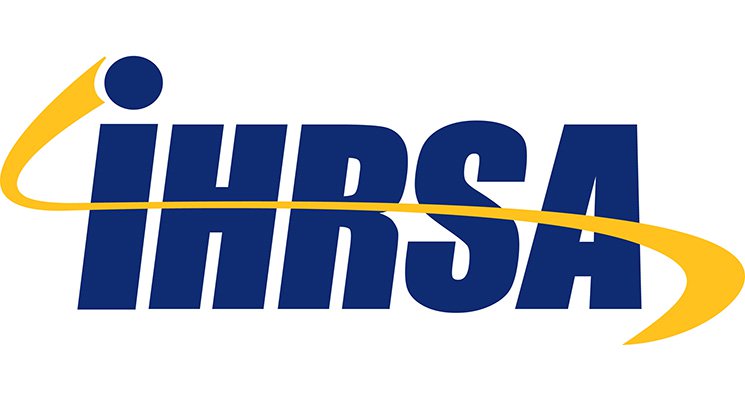With one of the fitness industry’s central players — IHRSA — priming for its annual convention and trade show in a couple weeks, it’s worth taking a moment to consider the general benefits of attending such events. For companies selling machinery, equipment, gear, software, and other products, the benefit is clear: Easy access to many potential customers at one time.
What about for health club or sports facility owners and managers? What’s in it for you? Is it worth the investment of time and participation fees?
In a word, yes. Attending a convention and/or trade show is beneficial to facility owners first and foremost because of the opportunity to connect with others in the industry. Sure, they may be competitors, but the old saying holds true: Keep your friends close and your enemies closer. Your competitors, other clubs in your industry, are the ones from whom you have something to learn. Happily, participants who choose to attend events like conventions generally do so with an open attitude: They’re there to share. Through casual conversation, over meals and beverages, by chance meetings and introductions, ideas are transferred and transformed. Want to know how the gym down the street handles retention issues? Want to understand why that other baseball center is so successful at attracting new customers? Here’s your chance to find out.
Also, those guys out on the floor trying to sell you stuff? They’re not just looking to fill their pockets. Most of them attend with ideals of relationship-building in mind. They really want the opportunity to meet you, get to know you, understand your needs and desires as a customer. From their point of view, the better they know you the better they can serve you — and the better they can serve you, the better off you are. And it’s a lot easier for a salesperson to cut a deal for someone with whom he or she has a personal connection than for a stranger.
Finally, there’s the whole pay-it-forward idea. As a business owner or manager, and specifically as the business owner or manager of a fitness or sports facility, you’re part of a community. Even if it’s easy to forget for most of the year, conventions and trade shows can serve to remind you that the difficult work you do is the same as the difficult work others do. And just as you can gain ideas and tips from other facility folk you meet at such events, other facility folk can gain ideas and tips from you. You might even seek to take part in a panel or give a talk — because business, as you no doubt know, is as much about giving as it is about receiving. There is no better opportunity for giving than to share what you know, what your best practices are, and how you meet day-to-day demands than at a large gathering where so many industry-mates are all at once. You might not see immediate returns, but eventually your paying it forward will pay off. In tangible and intangible ways, you’ll feel the benefits of having been part of it all.


 This fall, my gym buddy acquired wearable technology. You know the drill: a sleek-looking wristband; an endless stream of personal fitness data collected, analyzed, advertised on social media; a self-regulated, continuously fine-tuned fitness plan based on the constant feedback. All well and good, but suddenly I found myself going to the gym on my own a lot more. With a sort of built-in trainer and a shift in fitness goals (now, instead of running for thirty minutes on the treadmill, she aimed to take 10,000 steps per day) my friend seemed not to need the gym so much any more — at first.
This fall, my gym buddy acquired wearable technology. You know the drill: a sleek-looking wristband; an endless stream of personal fitness data collected, analyzed, advertised on social media; a self-regulated, continuously fine-tuned fitness plan based on the constant feedback. All well and good, but suddenly I found myself going to the gym on my own a lot more. With a sort of built-in trainer and a shift in fitness goals (now, instead of running for thirty minutes on the treadmill, she aimed to take 10,000 steps per day) my friend seemed not to need the gym so much any more — at first.
 You struggle with retaining members and signing up new clients. How could you not? With the proliferation of low-cost health clubs, wearable technology, home video exercise plans, and YouTube workout videos that go viral within hours, traditional fitness facilities face enormous challenges these days — and experts tell us we’re only at the beginning of what will be a sea change in the way the fitness industry operates. In this blog space there’s been a lot of talk about facing the challenges by building communities; investing in trainers, staff, and other human resources; and incorporating technology. Here’s another approach to consider: becoming the solution.
You struggle with retaining members and signing up new clients. How could you not? With the proliferation of low-cost health clubs, wearable technology, home video exercise plans, and YouTube workout videos that go viral within hours, traditional fitness facilities face enormous challenges these days — and experts tell us we’re only at the beginning of what will be a sea change in the way the fitness industry operates. In this blog space there’s been a lot of talk about facing the challenges by building communities; investing in trainers, staff, and other human resources; and incorporating technology. Here’s another approach to consider: becoming the solution.
 “How are we going to make the women happy in this club?” That’s the question health clubs and similar facilities should be asking themselves says Bridget Brennan, author of the book Why She Buys; founder and CEO of Female Factor, a Chicago-based consulting firm that specializes in marketing to women; and keynote speaker at the 2013 Club Industry Conference and Exposition later this week. According to Brennan, women drive 70 to 80 percent of consumer spending worldwide. If they’re not spending the money themselves, she says, then they’re influencing or vetoing someone else’s decision to spend it. Either way, women tend to spread the word: “[They] are the drivers of word-of-mouth publicity,” Brennan explained to Club Industry.
“How are we going to make the women happy in this club?” That’s the question health clubs and similar facilities should be asking themselves says Bridget Brennan, author of the book Why She Buys; founder and CEO of Female Factor, a Chicago-based consulting firm that specializes in marketing to women; and keynote speaker at the 2013 Club Industry Conference and Exposition later this week. According to Brennan, women drive 70 to 80 percent of consumer spending worldwide. If they’re not spending the money themselves, she says, then they’re influencing or vetoing someone else’s decision to spend it. Either way, women tend to spread the word: “[They] are the drivers of word-of-mouth publicity,” Brennan explained to Club Industry.


